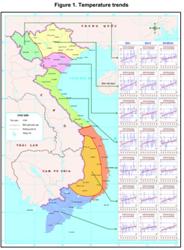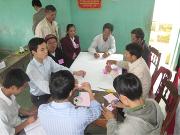The Importance of Community Based Watershed Restoration & Conservation
A shortage of water or unreliable access to water is one of the biggest issues in development. Community water sources dry up during climate change related drought—or seasonally during the dry season.
There is competition among different segments of the community for available water. Discussing community water challenges calls for stepping back from the immediate problem and looking at the relevant underlying causes for the shortage of water in order to begin developing solutions.
CSDi has seen a number of water related partner projects worldwide. We are seeing tremendous similarities between the projects: not enough water, too much water—and contaminated water. These challenges lead to reduced harvests, reduced income, reduced food security and nutrition, chronic ill health from waterborne disease, and flooding.
Agricultural water management addresses water challenges on the micro scale: a subsistence farmer’s fields. We look at ways of reducing runoff which had the positive benefits of both reducing erosion and keeping a valuable water on the field rather than being lost as runoff. We looked at mulches as a method of reducing evaporation—and therefore conserving our water resources. We also looked at methods of channeling water away from the farmer’s field during periods when there is an overabundance of water—and we investigated the opportunity of using dikes as a method of protecting a farmer’s field from flooding.
In Community Level Water Conservation and Management, we look at managing and conserving water at a macro level: in the community’s watersheds. In other words, in agricultural water management we work with an entire community of farmers on conserving and managing water—but at a level that is beneficial to their individual farm fields. In Community Level Water Conservation and Management, we will encouraging the same community of farmers and other community members to work together to do similar water conservation and management activities—but on a larger scale. On a larger scale from the standpoint of reforesting large-scale deforested hillsides (rather than using agroforestry techniques for their individual farm fields) and perhaps building dams to reduce erosion, flooding, and to harvest water that will benefit the entire community rather than the individual farmer.
Community Level Water Conservation and Management will benefit both the farmer through water harvesting and recharging groundwater systems, and will benefit the community at large by reducing the frequency and seriousness of floods by reforesting hillsides and plugging gullies which direct water rapidly to streams and rivers causing them to overflow suddenly and without warning.
Each of these approaches when integrated support each other creating greater resilience for community members than these could do individually.
Many of our partners’ projects assemble programs like the ones below for tackling their communities water related challenges.
Water Use Management Plan [Solution to underlying causes: Lack of Water Use Management Plan.]
[Activity 1]. Community-based workshop and survey with community members to identify their knowledge of water use and management.
[Activity 2]. Consultation with water use management expert to develop a participatory process and training program
[Activity 3]. Facilitate the Organization of a community based Water Use Management Committee
[Activity 4]. Community workshop on participatory mapping of water resources and uses, and degraded watersheds (consciousness raising)
[Activity 5]. Prioritize water springs, rivulets, ravines and man-made waterways for protection/restoration
[Activity 6]. Investigate and develop water sourcing alternatives for the community
[Activity 7]. Investigate underlying causes of flooding and potential adaptation/mitigation actions
[Activity 8]. Committee participatory workshop on developing a community-based and implementable Water Use Management Plan
Climate Smart Agricultural Practices Programme [solution to underlying cause: Inappropriate agricultural practices – loss of traditional agricultural knowledge]:
[Activity 1]: Surveys and interviews to collect traditional knowledge on agriculture, changes in agricultural cycles, vulnerabilities and coping strategies
[Activity 2]: Identify expert specialist/extension agent in soil, water and agriculture to design and facilitate participatory workshops
[Activity 3]. Community workshop on participatory mapping of water and land resources and uses, agricultural challenges and vulnerabilities—and degraded hotspots
[Activity 4]. Extension agent visits most affected farmers to identify exact CC impacts to crop production and needs of farmers to adapt to the impacts (diseases, droughts and floods)
[Activity 5]: Develop plan that combines resilient and improved agricultural techniques with traditional knowledge for an overall improvement in productivity
[Activity 6]: Establish pilot plots demonstrating better cultivation practices
[Activity 7]: Conduct Farmer workshops on soil restoration and conservation techniques
[Activity 8]: Conduct Farmer workshops on water harvesting, conservation and management techniques
There may be substantial overlap between activities that can be used between the different programs that partners come up with.. However in order to keep focused and provide different activities and resources, we will investigate different types of activities for each program. For example, the activities you choose may be similar to these for each of the different program components.
Climate Smart Agriculture activities for Farm Fields:
-get more organic material into the soil
-use mulch on the surface of the soil
-put up barriers in the field to retard the movement of water off of the field
Water Conservation and Management Activities for Deforested Watershed:
-work with a watershed restoration expert to develop a restoration plan
-set up a tree seedling nursery in advance of the rainy season to get a stock of tree seedlings going to -be used in the reforestation plan
-identify destructive gullies that could be plugged with brushwood or loose stone check dams
-plant water loving trees along the banks of the river to reduce erosion and reduce the impact of water
What we will do to initiate the development of a plan.
We’re going to do six important things in developing a water conservation and management plan for your community.
1. Very clearly describe the highest priority, specific water related challenge that your community faces.
2. Establish a water management subcommittee to provide long-term consistency and management for a water conservation and management plan.
3. Offer a consciousness raising workshop for the subcommittee so that they can learn about the different components of a water conservation and management plan.
5. Provide consciousness raising meetings, handouts, and posters for community members about water conservation and management.
4. Develop teams that can participate in the implementation of the different activities defined in the plan.
6. Identify a highly specific activity for community members to implement and lead them in a training workshop about its implementation
How will we do this?
We will start by determining what our community member’s water related vulnerabilities are, what hazards they face, what their capacity is to implement and maintain activities, analyze what existing techniques they are successfully using and what resources are locally available. In other words we need to determine what can they do, what local resources and techniques they have available for doing these activities, and what would they be motivated to continue to do after your NGO’s sub
sidies and technical resources come to an end.
Getting Started
The first thing that we need to do is a participatory needs assessment which will evaluate the water related hazards, risks, and vulnerabilities that your community members may face—and determine if they have adopted any coping strategies to solve the challenges that they face.
We then need to look at resources that they have available for improving existing practices and exploring new ones. These resources could be in the form of and capability (capacity), human capital, land, building materials, labor, and grasses, hedges, and trees for planting in the watershed and along stream beds and shorelines.
As your ideas develop for refinements in your project design you need to consider two things. One is to seek the advice of an expert in the chosen activities who is familiar with working in your region and with your community’s culture. This expert can help you determine what will work and what will not, what activities communities are likely to maintain over a span of time—and which they’re unlikely to maintain over span of time. They can also connect you to extension services.
Two, you need to regularly share your developing activity design with the community members in an effort to make sure that you’re heading in a direction that they like, that they’re comfortable with, and that they will feel ownership in.
You also need to be thinking about the development of a water management committee if you haven’t already done that. This might not happen overnight, but it will simplify the training as the committee might have a vested interest in encouraging all members to participate.
The improvements that we make should be planned such that effort and costs don’t outweigh the benefits—and lead to eventual abandonment after project subsidies terminate. Also your project design should encourage reliance on local resources and capacities—in other words we want to reduce reliance on “giveaways” because your organizational giveaways will stop once you’re project is done.
When you’re clear about the community’s context, capacities and resources, you can begin proposing water management practices which will be meaningful for them. We will examine things like consciousness-raising, mitigation activities such as reforestation, gully plugging, and possibly even the construction of a subsurface damn in a sandy streambed. Even though you will have maintained contact with your community, once you have come up with a draft plan of the whole water management component, it will be time to present it to the community for their feedback and comments.

